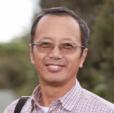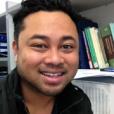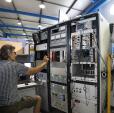

Showing 201 - 220 of 401 results

Radiocarbon dating supports Aboriginal occupation of South Australia for 29,000 years
Radiocarbon dating at ANSTO has supported research that vastly extends the known timeline of the Aboriginal occupation of South Australia’s Riverland region.
Reconstructing the history of coastal erosion
Research makes it possible to assess if and how rocky coasts, which make up the majority of the world’s coasts including Australia and New Zealand, will respond to changes in marine conditions.
Earthquake clues unearthed in strange, precariously balanced rocks
Imperial College London researchers tapped into ancient geological data locked within precariously balanced rocks using a new technique to boost the precision of hazard estimates for large earthquakes.
Environmental research at archaeological site
Insights about Mayan Empire relevant for current climate challenges
Photographer captures images inside the main ring of the Australian Synchrotron
An accomplished international photographer has capture dazzling new images of one component of the main ring at our Australian Synchrotron and provided an inside view of the electron’s path when it is used.

Dean was born in Wales and completed a PhD in X-ray optics at the Daresbury and Brookhaven synchrotrons. His first job was building a surface science beamline at Elettra in Italy.
Rare boomerangs used by ancestors of Yandruwandha Yawarrawarrka people dated at ANSTO
A rare collection of traditional Aboriginal wooden objects in varying degrees of preservation found along a dry creek bed in South Australia have been dated to a period spanning 1650 to 1830 at the Centre for Accelerator Science at ANSTO.
Project BRIGHT
The BRIGHT Project will expand the beamline infrastructure of the Australian Synchrotron to increase both its capacity and capabilities.

Role at ANSTO
Iron and Fire
Using geoarchaeology to reconstruct the history of an ancient Khmer city.
Evidence of quantum state in spin cluster chain
Phenomenon predicted by Nobel Prize recipient
Radiocarbon is a powerful tracer for ocean circulation and climate studies
Radiocarbon analyses on corals from two sites in Australian waters of the southwest (SW) Pacific has indicated significant changes in ocean circulation in the Pacific and large climate variability during the early to mid-Holocene period (8,000-5,400 years ago).
Fine particle pollution peaks during bushfires
Recent catastrophic Australian bushfires produced extremely high levels of fine particle pollution.
Headed to Antarctica
Young researcher accepted into the Australian Antarctic Science Program.
ANSTO contributes to state-wide survey of groundwater resources in NSW
ANSTO groundwater experts have collaborated with the NSW Department of Planning, Industry and Environment on a comprehensive survey of groundwater resources in the state.
Research highlights published and Swiss delegation visits

Radiation Testing - Facilities Technical Specifications
ANSTO provides multiple sources for radiation testing of materials and devices including Co-60 gamma sources, x-ray, proton and heavier ion-beams.
